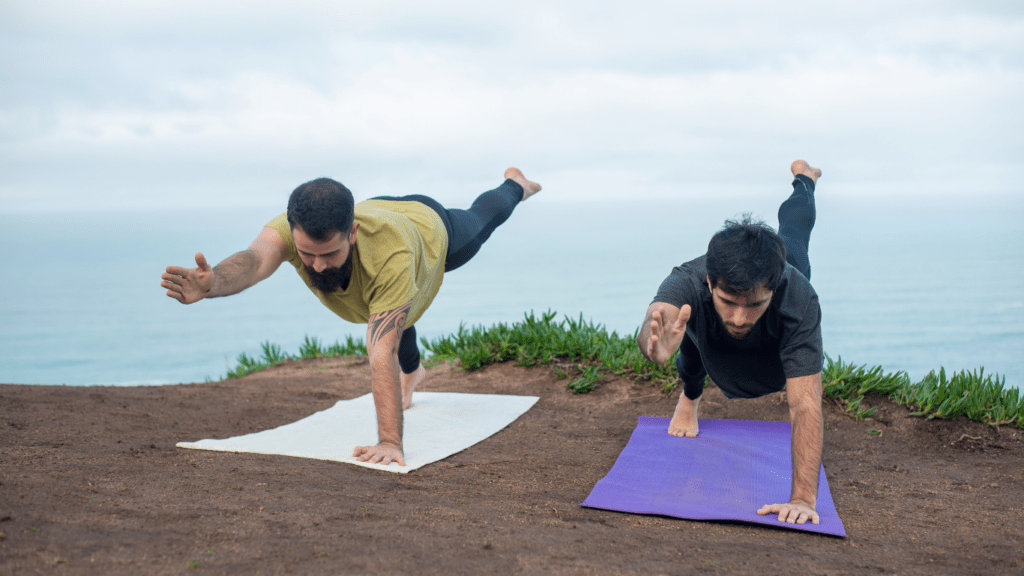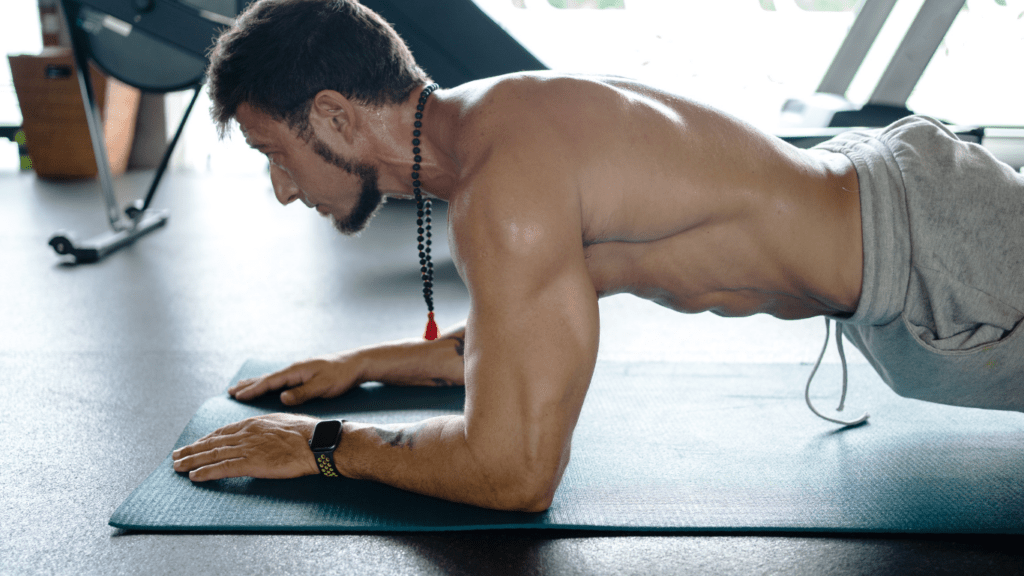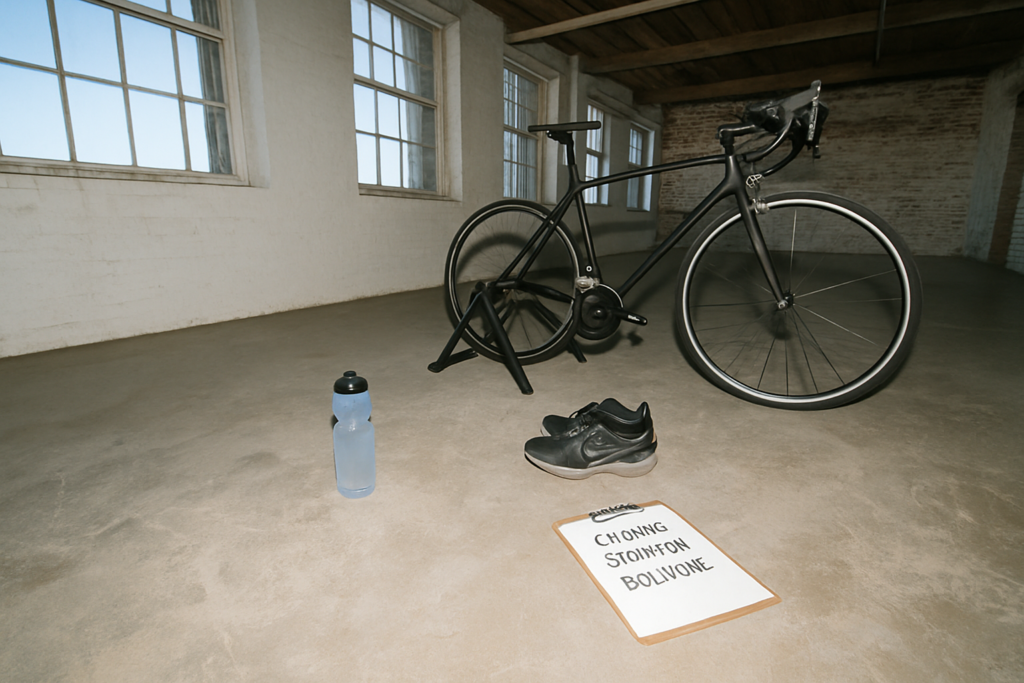The Importance of Core Strength in Cycling
Core strength boosts cycling performance by enhancing stability, endurance, and efficiency.
Benefits of Core Workouts for Cyclists
Core workouts enhance balance and posture on the bike. Strong core muscles reduce fatigue during long rides by distributing effort more evenly across the body.
Specific exercises like planks and bridges target muscles essential for maintaining a stable and efficient pedaling motion.
Common Core Stability Issues Among Cyclists
Weak core muscles lead to poor posture and imbalance. Many cyclists experience lower back pain due to inadequate core strength.
Imbalances between different muscle groups can cause inefficiencies and discomfort. Regularly incorporating targeted core exercises addresses these issues and improves cycling performance.
Essential Core Workouts for Cyclists
Cyclists can enhance performance through targeted core workouts. Let’s explore specific exercises that hone endurance and power.
Plank Variations for Endurance
Plank variations bolster core endurance. Traditional planks engage the entire core, improving stability on long rides. Side planks target obliques, essential for maintaining balance.
Adding leg raises to planks increases difficulty and engages hip flexors.
Example Exercises:
- Traditional Plank: Hold for 60 seconds
- Side Plank: Hold for 45 seconds each side
- Plank with Leg Raise: Alternate legs for 30 seconds
Dynamic Exercises for Power
Dynamic exercises enhance power output. Russian twists engage the obliques and improve rotational strength. Bicycle crunches mimic pedaling motions, strengthening lower abs and hip flexors.
Medicine ball slams generate explosive power, beneficial for sprints.
- Russian Twists: Perform 20 twists
- Bicycle Crunches: Complete 30 reps
- Medicine Ball Slams: Execute 15 slams
Including these core workouts develops the endurance and power necessary for optimal cycling performance.
Integrating Core Workouts Into Your Cycling Routine

A strong core enhances endurance and stability on the bike. By integrating core workouts into your cycling routine, riders can improve performance and prevent injuries.
Frequency and Duration of Core Training
Consistency builds core strength effectively. Incorporate core workouts 2-3 times a week to see notable improvements. Each session should last 15-20 minutes, focusing on various exercises like planks and dynamic movements.
Shorter, more frequent sessions are better than long, infrequent ones for maintaining core stability.
| Session | Frequency | Duration |
|---|---|---|
| Core | 2-3 times/week | 15-20 minutes/session |
Pre-Ride and Post-Ride Exercises
Pre-ride exercises activate core muscles before hitting the road. Spend 5-10 minutes on light dynamic stretches and movements like cat-cows and leg swings.
Activation helps improve bike handling and reduces the risk of strain.
Post-ride exercises aid recovery and flexibility. Dedicate 5-10 minutes to static stretches focusing on the core and lower back.
Incorporate exercises such as the cobra stretch and child’s pose to relax and elongate muscles engaged during cycling.
Advanced Tips to Maximize Core Workouts
Maximizing core workouts can lead to significant improvements in cycling performance. Using advanced techniques enhances the effectiveness of your core routine.
Incorporating Equipment and Tools
Using equipment elevates core workouts by adding variety and complexity. Stability balls, resistance bands, and medicine balls increase challenge levels, engaging more muscle groups.
Stability balls enhance exercises like plank, adding an element of balance. Resistance bands provide varying resistance levels for exercises like Russian twists.
Medicine balls introduce weight for increased intensity during exercises like sit-ups. Incorporating these tools diversifies workouts, preventing adaptation and promoting continuous improvement.
Monitoring Progress and Adjusting Workouts
Track progress regularly to ensure workouts remain effective and challenging. Keep a workout journal detailing exercises, reps, and sets. Periodically evaluate core strength using tests like the plank hold duration.
Adjust workouts as needed, increasing difficulty by adding reps, sets, or resistance.
Include progressive overload by gradually enhancing workout intensity. Monitoring and adjusting workouts maintains progress, preventing plateaus and ensuring continuous improvement.

 I’m Brendamee McCartyierr, and as the founder of Cycle Smooth Ride Long, I'm thrilled to bring you the ultimate resource for all things cycling. Whether you're a seasoned rider or just starting on your cycling journey, our mission is to support your passion for two wheels with trusted advice, insightful reviews, and expert tips.
Cycling is more than just a hobby—it's a lifestyle that promotes health, freedom, and adventure. At Cycle Smooth Ride Long, we’re committed to making your ride smoother, longer, and more enjoyable by providing you with the latest in cycling news, nutrition advice, fitness tips, and gear reviews. We also cater to beginners, offering comprehensive guides to help you get started and build confidence on the road.
I’m Brendamee McCartyierr, and as the founder of Cycle Smooth Ride Long, I'm thrilled to bring you the ultimate resource for all things cycling. Whether you're a seasoned rider or just starting on your cycling journey, our mission is to support your passion for two wheels with trusted advice, insightful reviews, and expert tips.
Cycling is more than just a hobby—it's a lifestyle that promotes health, freedom, and adventure. At Cycle Smooth Ride Long, we’re committed to making your ride smoother, longer, and more enjoyable by providing you with the latest in cycling news, nutrition advice, fitness tips, and gear reviews. We also cater to beginners, offering comprehensive guides to help you get started and build confidence on the road.
